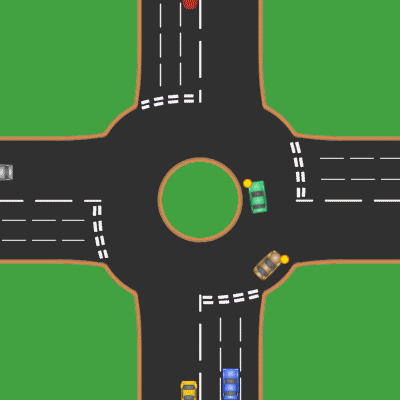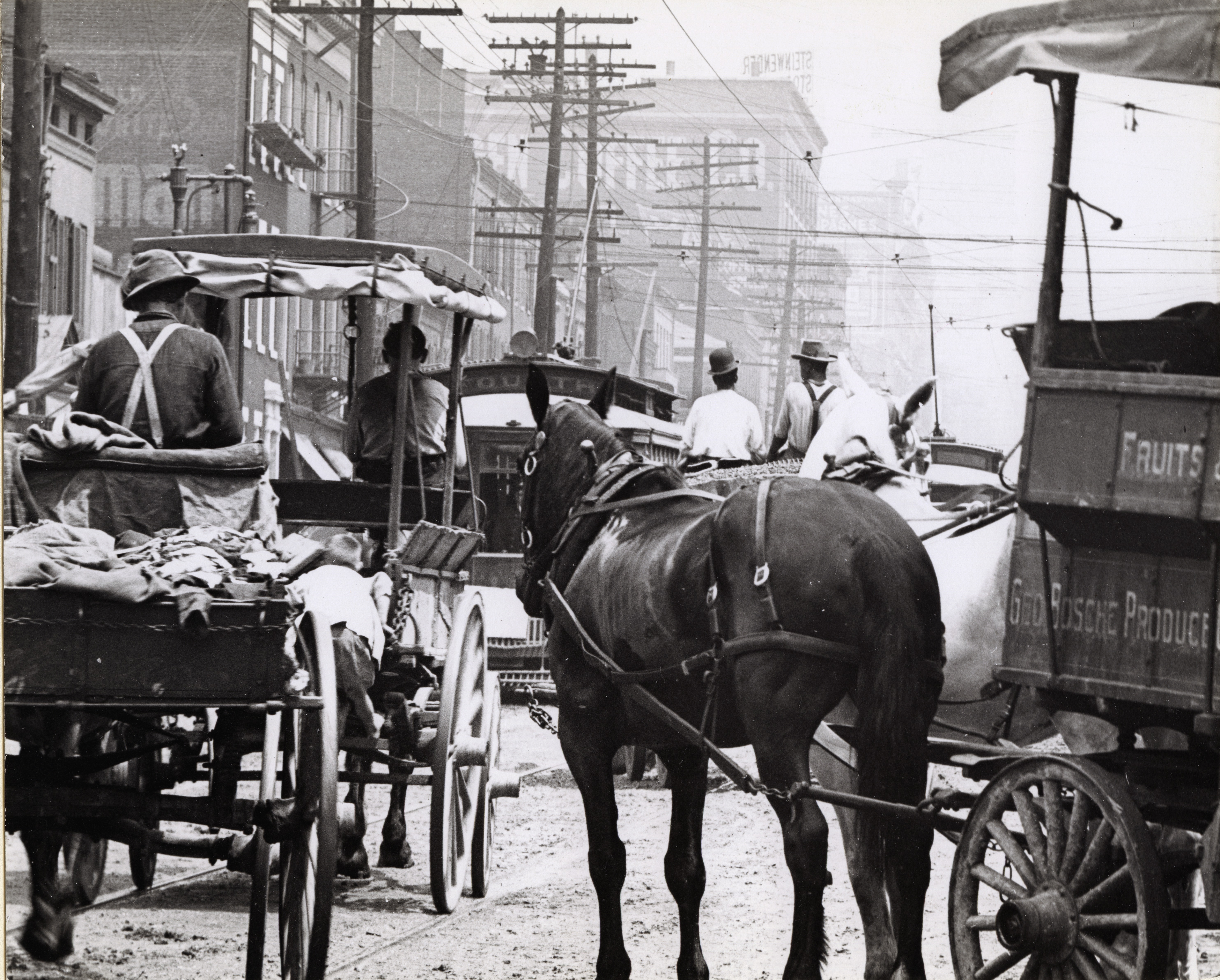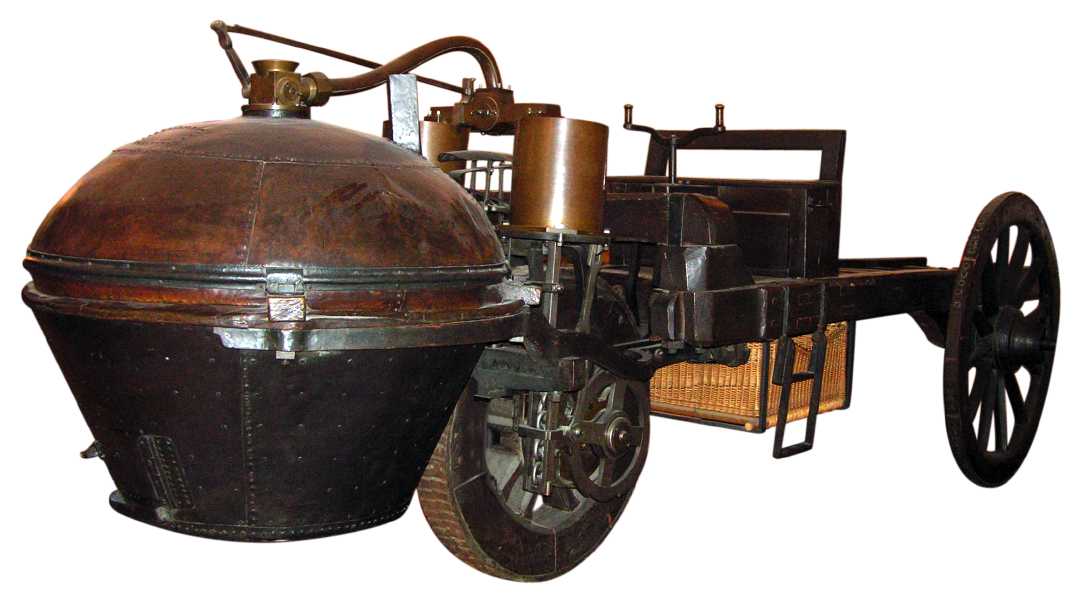|
Vehicle Blind Spot
A blind spot in a vehicle or vehicle blind spot is an area around the vehicle that cannot be directly seen by the driver while at the controls, under existing circumstances. In transport, driver visibility is the maximum distance at which the driver of a vehicle can see and identify prominent objects around the vehicle. Visibility is primarily determined by weather conditions (see visibility) and by a vehicle's design. The parts of a vehicle that influence visibility include the windshield, the dashboard and the pillars. Good driver visibility is essential to safe road traffic. Conditions for blind spots Blind spots exist in a wide range of vehicles: aircraft, cars, buses, trucks, agricultural equipments, heavy equipments, boats, ships, trams, and trains. Blind spots may occur in the front of the driver when the A-pillar (also called the windshield pillar), side-view mirror, or interior rear-view mirror block a driver's view of the road. Behind the driver, cargo, headrests, a ... [...More Info...] [...Related Items...] OR: [Wikipedia] [Google] [Baidu] |
A-pillar Blind-spots
The pillars on a car with permanent roof body style (such as four-door sedans) are the vertical or nearly vertical supports of its window area or greenhouse—designated respectively as the ''A, B, C'' and (in larger cars such as 4-door station wagons and sport utility vehicles) ''D-pillar,'' moving from front to rear, in profile view. Nomenclature Car pillars are components that support the structure of an enclosed automobile body. This is similar to that of a house with pillars supporting the roof over the floor. Car pillars are designed to stand in near vertical or inclined positions to support the roof. The consistent alphabetical designation of a car's pillars provides a common reference for design discussion and critical communication. This is used by insurance companies to identify damaged components and rescue teams employ pillar nomenclature to facilitate communication when cutting wrecked vehicles, as when using the jaws of life. The A-pillars on each side of th ... [...More Info...] [...Related Items...] OR: [Wikipedia] [Google] [Baidu] |
Sonar
Sonar (sound navigation and ranging or sonic navigation and ranging) is a technique that uses sound propagation (usually underwater, as in submarine navigation) to navigation, navigate, measure distances (ranging), communicate with or detect objects on or under the surface of the water, such as other vessels. "Sonar" can refer to one of two types of technology: ''passive'' sonar means listening for the sound made by vessels; ''active'' sonar means emitting pulses of sounds and listening for echoes. Sonar may be used as a means of acoustic location and of measurement of the echo characteristics of "targets" in the water. Acoustic location in air was used before the introduction of radar. Sonar may also be used for robot navigation, and SODAR (an upward-looking in-air sonar) is used for atmospheric investigations. The term ''sonar'' is also used for the equipment used to generate and receive the sound. The acoustic frequencies used in sonar systems vary from very low (infrasonic ... [...More Info...] [...Related Items...] OR: [Wikipedia] [Google] [Baidu] |
Automobile A-pillar Bar Blind Spots
A car or automobile is a motor vehicle with wheels. Most definitions of ''cars'' say that they run primarily on roads, seat one to eight people, have four wheels, and mainly transport people instead of goods. The year 1886 is regarded as the birth year of the car, when German inventor Carl Benz patented his Benz Patent-Motorwagen. Cars became widely available during the 20th century. One of the first cars affordable by the masses was the 1908 Model T, an American car manufactured by the Ford Motor Company. Cars were rapidly adopted in the US, where they replaced animal-drawn carriages and carts. In Europe and other parts of the world, demand for automobiles did not increase until after World War II. The car is considered an essential part of the developed economy. Cars have controls for driving, parking, passenger comfort, and a variety of lights. Over the decades, additional features and controls have been added to vehicles, making them progressively more complex. These i ... [...More Info...] [...Related Items...] OR: [Wikipedia] [Google] [Baidu] |
Railroad Crossing
A level crossing is an intersection where a railway line crosses a road, path, or (in rare situations) airport runway, at the same level, as opposed to the railway line crossing over or under using an overpass or tunnel. The term also applies when a light rail line with separate right-of-way or reserved track crosses a road in the same fashion. Other names include railway level crossing, railway crossing (chiefly international), grade crossing or railroad crossing (chiefly American), road through railroad, criss-cross, train crossing, and RXR (abbreviated). There are more than 100,000 level crossings in Europe and more than 200,000 in North America. History The history of level crossings depends on the location, but often early level crossings had a flagman in a nearby booth who would, on the approach of a train, wave a red flag or lantern to stop all traffic and clear the tracks. Gated crossings became commonplace in many areas, as they protected the railway fro ... [...More Info...] [...Related Items...] OR: [Wikipedia] [Google] [Baidu] |
Intersection (road)
An intersection or an at-grade junction is a junction where two or more roads converge, diverge, meet or cross at the same height, as opposed to an interchange, which uses bridges or tunnels to separate different roads. Major intersections are often delineated by gores and may be classified by road segments, traffic controls and lane design. Types Road segments One way to classify intersections is by the number of road segments (arms) that are involved. * A three-way intersection is a junction between three road segments (arms): a T junction when two arms form one road, or a Y junction, the latter also known as a fork if approached from the stem of the Y. * A four-way intersection, or crossroads, usually involves a crossing over of two streets or roads. In areas where there are blocks and in some other cases, the crossing streets or roads are perpendicular to each other. However, two roads may cross at a different angle. In a few cases, the junction of two road segments ... [...More Info...] [...Related Items...] OR: [Wikipedia] [Google] [Baidu] |
Roundabouts
A roundabout is a type of circular intersection or junction in which road traffic is permitted to flow in one direction around a central island, and priority is typically given to traffic already in the junction.''The New Shorter Oxford English Dictionary,'' Volume 2, Clarendon Press, Oxford (1993), page 2632 Engineers use the term modern roundabout to refer to junctions installed after 1960 that incorporate various design rules to increase safety. Both modern and non-modern roundabouts, however, may bear street names or be identified colloquially by local names such as rotary or traffic circle. Compared to stop signs, traffic signals, and earlier forms of roundabouts, modern roundabouts reduce the likelihood and severity of collisions greatly by reducing traffic speeds and minimizing T-bone and head-on collisions. Variations on the basic concept include integration with tram or train lines, two-way flow, higher speeds and many others. For pedestrians, traffic exiting the ... [...More Info...] [...Related Items...] OR: [Wikipedia] [Google] [Baidu] |
Traffic
Traffic comprises pedestrians, vehicles, ridden or herded animals, trains, and other conveyances that use public ways (roads) for travel and transportation. Traffic laws govern and regulate traffic, while rules of the road include traffic laws and informal rules that may have developed over time to facilitate the orderly and timely flow of traffic. Organized traffic generally has well-established priorities, lanes, right-of-way, and traffic control at intersections. Traffic is formally organized in many jurisdictions, with marked lanes, junctions, intersections, interchanges, traffic signals, or signs. Traffic is often classified by type: heavy motor vehicle (e.g., car, truck), other vehicle (e.g., moped, bicycle), and pedestrian. Different classes may share speed limits and easement, or may be segregated. Some jurisdictions may have very detailed and complex rules of the road while others rely more on drivers' common sense and willingness to cooperate. Organization ... [...More Info...] [...Related Items...] OR: [Wikipedia] [Google] [Baidu] |
A-pillar Blind-spot
The pillars on a car with permanent roof body style (such as four-door sedans) are the vertical or nearly vertical supports of its window area or greenhouse—designated respectively as the ''A, B, C'' and (in larger cars such as 4-door station wagons and sport utility vehicles) ''D-pillar,'' moving from front to rear, in profile view. Nomenclature Car pillars are components that support the structure of an enclosed automobile body. This is similar to that of a house with pillars supporting the roof over the floor. Car pillars are designed to stand in near vertical or inclined positions to support the roof. The consistent alphabetical designation of a car's pillars provides a common reference for design discussion and critical communication. This is used by insurance companies to identify damaged components and rescue teams employ pillar nomenclature to facilitate communication when cutting wrecked vehicles, as when using the jaws of life. The A-pillars on each side of th ... [...More Info...] [...Related Items...] OR: [Wikipedia] [Google] [Baidu] |
Field Of View
The field of view (FoV) is the extent of the observable world that is seen at any given moment. In the case of optical instruments or sensors it is a solid angle through which a detector is sensitive to electromagnetic radiation. Humans and animals In the context of human and primate vision, the term "field of view" is typically only used in the sense of a restriction to what is visible by external apparatus, like when wearing spectacles or virtual reality goggles. Note that eye movements are allowed in the definition but do not change the field of view when understood this way. If the analogy of the eye's retina working as a sensor is drawn upon, the corresponding concept in human (and much of animal vision) is the visual field. It is defined as "the number of degrees of visual angle during stable fixation of the eyes".Strasburger, Hans; Pöppel, Ernst (2002). Visual Field. In G. Adelman & B.H. Smith (Eds): ''Encyclopedia of Neuroscience''; 3rd edition, on CD-ROM. El ... [...More Info...] [...Related Items...] OR: [Wikipedia] [Google] [Baidu] |
Road
A road is a linear way for the conveyance of traffic that mostly has an improved surface for use by vehicles (motorized and non-motorized) and pedestrians. Unlike streets, the main function of roads is transportation. There are many types of roads, including parkways, avenues, controlled-access highways (freeways, motorways, and expressways), tollways, interstates, highways, thoroughfares, and local roads. The primary features of roads include lanes, sidewalks (pavement), roadways (carriageways), medians, shoulders, verges, bike paths (cycle paths), and shared-use paths. Definitions Historically many roads were simply recognizable routes without any formal construction or some maintenance. The Organization for Economic Co-operation and Development (OECD) defines a road as "a line of communication (travelled way) using a stabilized base other than rails or air strips open to public traffic, primarily for the use of road motor vehicles running on their own wheels", whic ... [...More Info...] [...Related Items...] OR: [Wikipedia] [Google] [Baidu] |
Automobile
A car or automobile is a motor vehicle with Wheel, wheels. Most definitions of ''cars'' say that they run primarily on roads, Car seat, seat one to eight people, have four wheels, and mainly transport private transport#Personal transport, people instead of cargo, goods. The year 1886 is regarded as the birth year of the car, when German inventor Carl Benz patented his Benz Patent-Motorwagen. Cars became widely available during the 20th century. One of the first cars affordable by the masses was the 1908 Ford Model T, Model T, an American car manufactured by the Ford Motor Company. Cars were rapidly adopted in the US, where they replaced Draft animal, animal-drawn carriages and carts. In Europe and other parts of the world, demand for automobiles did not increase until after World War II. The car is considered an essential part of the Developed country, developed economy. Cars have controls for driving, parking, passenger comfort, and a variety of lights. Over the decades, a ... [...More Info...] [...Related Items...] OR: [Wikipedia] [Google] [Baidu] |
Driving
Driving is the controlled operation and movement of a vehicle, including cars, motorcycles, trucks, buses, and bicycles. Permission to drive on public highways is granted based on a set of conditions being met and drivers are required to follow the established road and traffic laws in the location they are driving. The word driving, has etymology dating back to the 15th century and has developed as what driving has encompassed has changed from working animals in the 15th to automobiles in the 1800s. Driving skills have also developed since the 15th century with physical, mental and safety skills being required to drive. This evolution of the skills required to drive have been accompanied by the introduction of driving laws which relate to not only the driver but the driveability of a car. Etymology The origin of the term ''driver'', as recorded from the 15th century, refers to the occupation of driving working animals, especially pack horses or draft horses. The verb ' '' ... [...More Info...] [...Related Items...] OR: [Wikipedia] [Google] [Baidu] |









